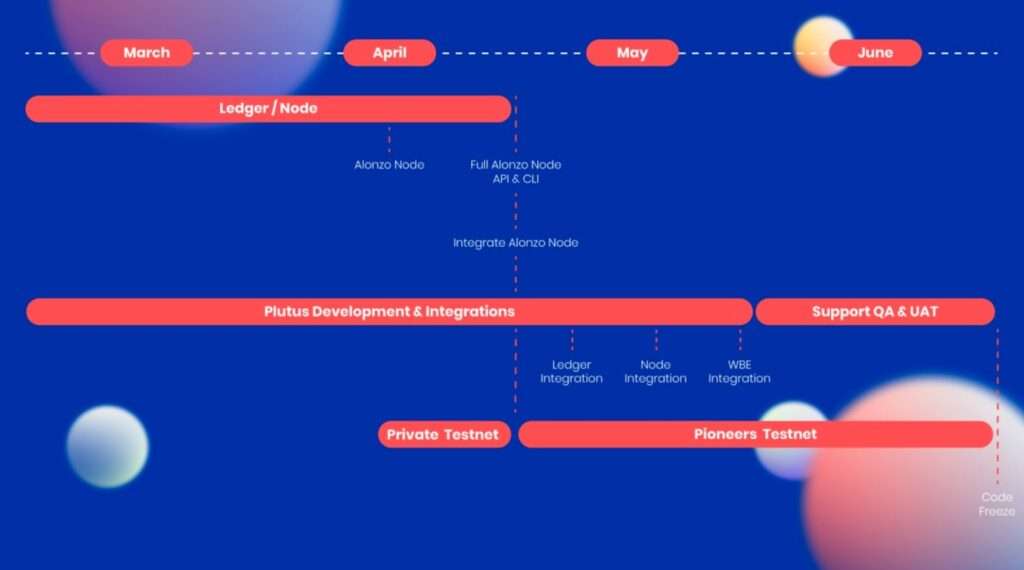Source: Immersion Imagery – Shutterstock
- The Alonzo hard fork is expected to take place in July 2021 and will lead Cardano into its smart contract era
- A first implementation of the IELE backend is expected to be released in about 6 months.
During yesterday’s Cardano 360 show, Input Output Global (IOG) CEO Charles Hoskinson revealed the rollout plan for the Alonzo hard fork, which will usher in the smart contract era called “Goguen.” According to the roadmap presented, the mainnet hard fork combinator (HFC) event for Alonzo could take place in July or August.
As Charles Hoskinson explained, the Alonzo integration will initially start at the ledger and node code during March and April. As part of this, IOG is working with 12 “alpha partners” to conduct testing in a private testnet.
Then, towards the end of April / beginning of May, the public “Pioneers Testnet” will be released. Thus, developers can start developing dApps, DeFi, and DEXs using Plutus on the testnet as early as April, with 1,300 people having already applied to be a pioneer.
In June, after two and a half months of testing, there will be a code freeze, which will kick off the hard fork. After that, there will be a “countdown” to the HFC, as was already the case with Shelley. However, the length of this is not yet known and will certainly also depend on the integration by exchanges.

Source: https://twitter.com/IOHK_Charles/status/1375169611415478272
Universality and an Uniswap clone
Besides the roadmap, there were many other interesting announcements during yesterday’s Cardano 360 show. Grigore Rosu, president and CEO of Runtime Verification, said that developers will see the first implementation of the IELE backend in about 6 months. Rosu talked about the collaboration with Charles Hoskinson that dates back to 2017 and stated:
We collaborated mainly on two big things. One was the K framework itself […] working with a blockchain and another one was how can we design a new language for the blockchain, a language that can provide us universality. That’s how we came up with the IELE which is inspired from the LLVE language, but it works with the blockchain and K.
We hope to put this together and have a universal framework for programming languages on the blockchain and developers can write in the programming language they are familiar with.
As Rosu revealed, the main goal initially is to release a first implementation of the IELE backend in about 6 months. This first implementation will essentially be a translator from LLVM to IELE without any library support.
There will be some limitations, but you’ll be able to write very basic smart contracts […] in 6 months. What really hope is that once developers realize that it is possible to write smart contracts in their regular programming languages, they will jump in to help. That happened with LLVM.
Another announcement was made by Lars Brünjes, Director of Education at IOG. His team has managed to implement an Uniswap clone as a proof of concept in Plutus, replicating “all the important features.” “It was pretty successful,” Brünjes stated. IOG also showed a demo and a working user interface (UI).
#Uniswap clone on #Cardano #blockchain. It will be faster, cheaper, safer & more efficient. pic.twitter.com/4IvTF7DKsk
— Nikodem Zegzda (@NikodemZegzda) March 25, 2021
Credit: Source link












































































































































